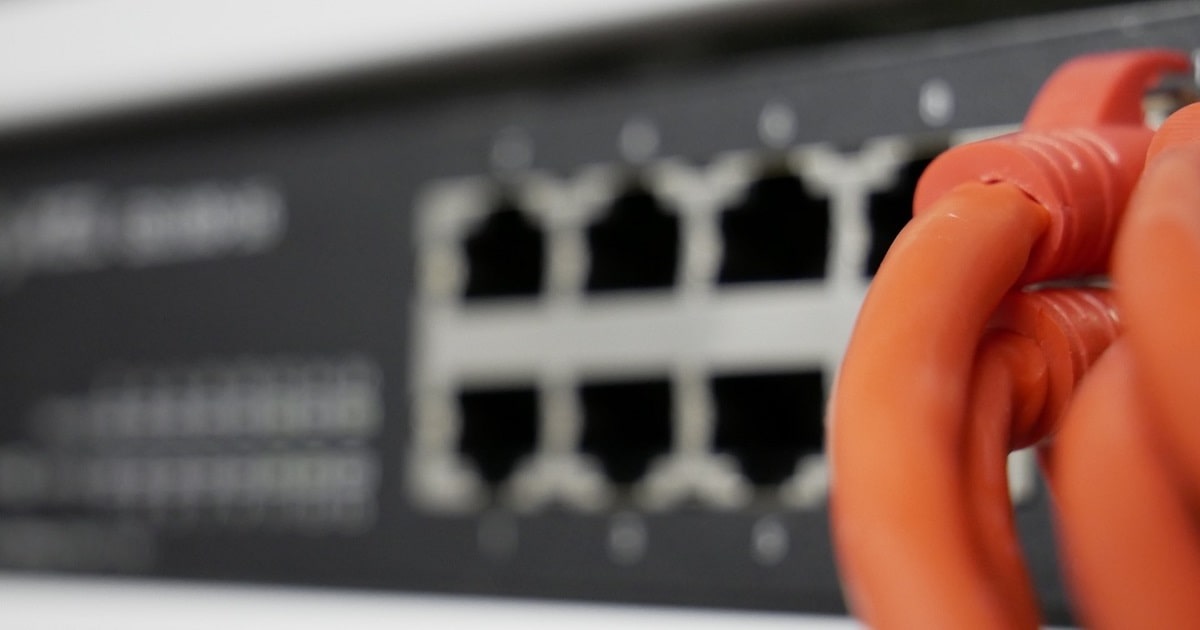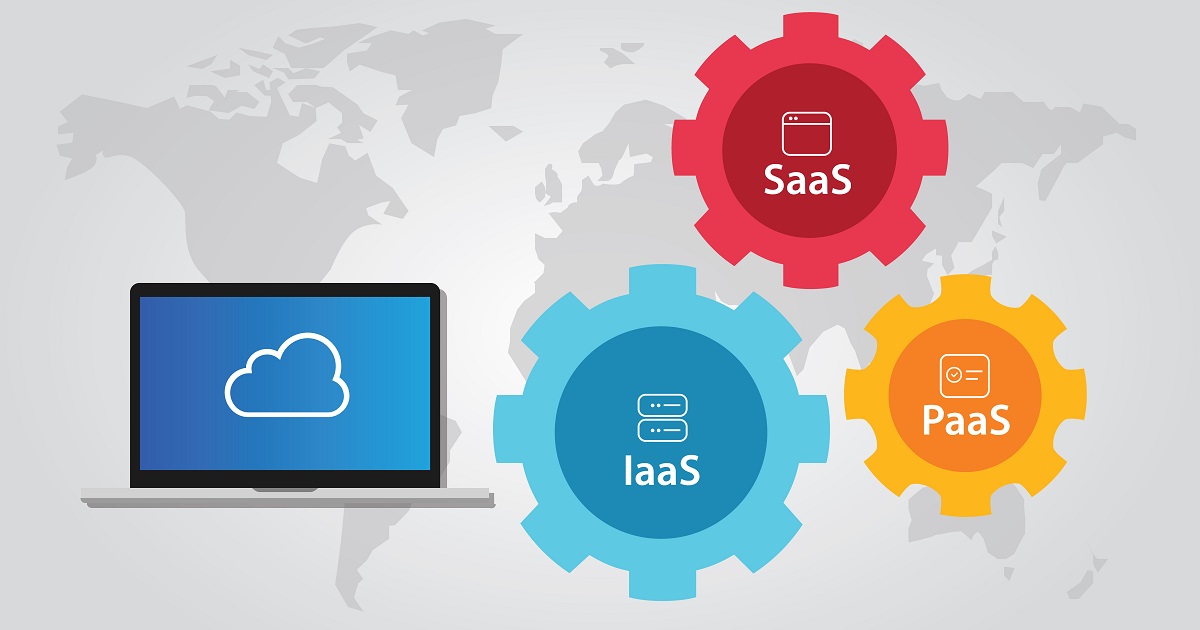
Hyper-Converged Infrastructure, Windows Systems and Network
Article | July 11, 2023
In my last blog in this series, we looked at the present state of 5G. Although it’s still early and it’s impossible to fully comprehend the potential impact of 5G use cases that haven’t been built yet, opportunities to monetize 5G with little additional investment are out there for network service providers (NSPs) who know where to look.
Now, it’s time to look toward the future. Anyone who’s been paying attention knows that 5G technology will be revolutionary across many industry use cases, but I’m not sure everyone understands just how revolutionary, and how quickly it will go down. According to Gartner®, “While 10% of CSPs in 2020 provided commercializable 5G services, which could achieve multiregional availability, this number will increase to 60% by 2024”.[i]
With so many recognizing the value of 5G and acting to capitalize on it, NSPs that fail to prepare for future 5G opportunities today are doing themselves and their enterprise customers a serious disservice. Preparing for a 5G future may seem daunting but working with a trusted interconnection partner like Equinix can help make it easier.
5G is so challenging for NSPs and their customers because it is so revolutionary. Mobile radio networks were built with consumer use cases in mind, which means the traffic from those networks is generally dumped straight to the internet. 5G is the first generation of wireless technology capable of supporting enterprise-class business applications, which means it’s also forcing many NSPs to consider alternatives to the public internet to support those applications.
User plane function breakout helps put traffic near the app
In my last article, I mentioned that one of the key steps mobile network operators (MNOs) could take to enable 5G monetization in the short term would be to bypass the public internet by enabling user traffic functions in the data center. This is certainly a step in the right direction, but to prepare themselves for future 5G and multicloud opportunities, they must go further by enabling user plane function (UPF) breakout.
The 5G opportunities of tomorrow will rely on wireless traffic residing as close as possible to business applications, to reduce the distance data must travel and keep latency as low as possible. This is a similar challenge to the one NSPs faced in the past with their wireline networks. To address that challenge, they typically deployed virtual network functions (VNFs) on their own equipment. This helped them get the network capabilities they needed, when and where they needed them, but it also required them to buy colocation capacity and figure out how to interconnect their VNFs with the rest of their digital infrastructure.
Instead, Equinix customers have the option to do UPF breakout with Equinix Metal®, our automated bare-metal-as-a-service offering, or Network Edge virtual network services on Platform Equinix®. Both options provide a simple, cost-effective way to get the edge infrastructure needed to support 5G business applications. Since both offerings are integrated with Equinix Fabric™, they allow NSPs to create secure software-defined interconnection with a rich ecosystem of partners. This streamlines the process of setting up hybrid deployments.
Working with Equinix can help make UPF breakout less daunting. Instead of investing massive amounts of money to create 5G-ready infrastructure everywhere they need it, they can take advantage of more than 235 Equinix International Business Exchange™ (IBX®) data centers spread across 65 metros in 27 countries on five continents. This allows them to shift from a potentially debilitating up-front CAPEX investment to an OPEX investment spread over time, making the economics around 5G infrastructure much more manageable.
Support MEC with a wide array of partners
Multiaccess edge compute (MEC) will play a key role in enabling advanced 5G use cases, but first enterprises need a digital infrastructure capable of supporting it. This gets more complicated when they need to modernize their infrastructure while maintaining existing application-level partnerships. To put it simply, NSPs and their enterprise customers need an infrastructure provider that can not only partner with them, but also partner with their partners.
With Equinix Metal, organizations can deploy the physical infrastructure they need to support MEC at software speed, while also supporting capabilities from a diverse array of partners. For instance, Equinix Metal provides support for Google Anthos, Amazon Elastic Container Service (ECS) Anywhere and Amazon Elastic Kubernetes Service (EKS) Anywhere. These are just a few examples of how Equinix interconnection offerings make it easier to collaborate with leading cloud providers to deploy MEC-driven applications.
Provision reliable network slicing in a matter of minutes
Network slicing is another important 5G capability that can help NSPs differentiate their offerings and unlock new business opportunities. On the surface, it sounds simple: slicing up network traffic into different classes of service, so that the most important traffic is optimized for factors such as high throughput, low latency and security. However, NSPs won’t always know exactly what slices their customers will want to send or where they’ll want to send them, making network slice mapping a serious challenge.
Preparing for a 5G future may seem daunting but working with a trusted interconnection partner like Equinix can help make it easier.”
Equinix Fabric offers a quicker, more cost-effective way to map network slices, with no need for cross connects to be set on the fly. With software-defined interconnection, the counterparty that receives the network slice essentially becomes an automated function that NSPs can easily control. This means NSPs can provision network slicing in a matter of minutes, not days, even when they don’t know who the counterparty is going to be. Service automation enabled by Equinix Fabric can be a critical element of an NSP’s multidomain orchestration architecture.
5G use case: Reimagining the live event experience
As part of the MEF 3.0 Proof of Concept showcase, Equinix partnered with Spectrum Enterprise, Adva, and Juniper Networks to create a proof of concept (PoC) for a differentiated live event experience. The PoC showed how event promoters such as minor league sports teams could ingest multiple video feeds into an AI/ML-driven GPU farm that lives in an Equinix facility, and then process those feeds to present fans with custom content on demand.
With the help of network slicing and high-performance MEC, fans can build their own unique experience of the event, looking at different camera angles or following a particular player throughout the game. Event promoters can offer this personalized experience even without access to the on-site data centers that are more common in major league sports venues.
DISH taps Equinix for digital infrastructure services in support of 5G rollout
As DISH looks to build out the first nationwide 5G network in the U.S., they will partner with Equinix to gain access to critical digital infrastructure services in our IBX data centers. This is a great example of how Equinix is equipped to help its NSP partners access the modern digital infrastructure needed to capitalize on 5G—today and into the future.
DISH is taking the lead in delivering on the promise of 5G in the U.S., and our partnership with Equinix will enable us to secure critical interconnections for a nationwide 5G network. With proximity to large population centers, as well as network and cloud density, Equinix is the right partner to connect our cloud-native 5G network.”
- Jeff McSchooler, DISH executive vice president of wireless network operations
Read More

Hyper-Converged Infrastructure
Article | October 3, 2023
Nowadays, SaaS, IaaS, and PaaS are some of the most common names across the B2B and B2C sectors. This is because they have become the most efficient and go-to tool for starting a business.
Together, they are significantly changing business operations around the globe and have emerged as separate sectors, revamping concepts of various product development, building and delivery processes.
SaaS Vs PaaS Vs IaaS
Each cloud computing model offers specific features and functionalities. Therefore, your organization must understand the differences.
Whether you require cloud-based software to create customized applications, get complete control over your entire infrastructure without physically maintaining it, or simply for storage options, there is a cloud service for you.
No matter what you choose, migrating to the cloud is the future of your business and technology.
What is the Difference?
IaaS: Aka Infrastructure as a Service IaaS allows organizations to manage their business resources such as their servers, network, and data storage on the cloud.
PaaS: Aka Platform as a Service allows businesses and developers to build, host, and deploy consumer-facing apps.
SaaS: Aka Software as a Service offers businesses and consumers cloud-based tools and applications for everyday use.
You can easily access all three cloud computing tools on the internet browser or online apps.
A great example would be Google Docs; Instead of working on one MS Word document and sending it around to each other, Google Docs allows your team to work and simultaneously collaborate online.
The Market Value
A recent report says that by 2028, the global SaaS market will be worth $716.52 billion, and by 2030, the global PaaS market will be worth $319 billion. Moreover, the global IaaS market is expected to be worth $292.58 billion by 2028, giving market players many opportunities.
XaaS: Everything as a Service
Another term more frequently used in IT is XaaS, short for Everything as a Service. It has emerged as a critical enabler of the Autonomous Digital Enterprise.
XaaS is a term for highly customized, responsive, data-driven products and services that are entirely in the hands of the customer and based on the information they give through everyday IoT devices like cell phones and thermostats.
Businesses can utilize this data generated over the cloud to deepen their customer relationships, sustain the sale beyond the initial product purchase and innovate faster.
Conclusion
Cloud computing is not restricted by physical hardware or office space. On the contrary, it allows your remote teams to work more effectively and seamlessly than ever, boosting productivity. Therefore, it offers maximum flexibility and scalability.
IaaS, SaaS, PaaS; whichever solution you choose, options are always available to help you and your team move into cloud computing.
Read More

Hyper-Converged Infrastructure
Article | October 10, 2023
Streamlining operations and maximizing efficiency: Choose the right tools for managing and orchestrating hyper-converged infrastructure to unlock its full potential with Hyperconverged solutions.
Managing and orchestrating hyper-converged infrastructure (HCI) is critical to modern IT operations. With the growing adoption of HCI solutions, choosing the right tools for management and orchestration is essential for organizations to optimize their infrastructure and ensure seamless operations. In this article, we will delve into the factors to consider when selecting Hyper-Converged tools for management and orchestration and explore some of the top options available in the market.
1. Symcloud Orchestrator
The Symcloud platform is a webscale solution designed for metal-service automation and orchestration in telecommunications. It enables the automation and management of various network components, including RAN (Radio Access Network), packet core, and MEC (Multi-Access Edge Computing). With Symcloud, businesses can centrally manage large numbers of CNF (Cloud-Native Function) and VNF (Virtual Network function) capable Kubernetes clusters on a single Kubernetes platform. The platform allows for rapid deployment of the entire solution stack in minutes, supporting edge, far edge, and core data centers. Symcloud provides advanced monitoring, planning, and healing capabilities, enabling users to view hardware, software, services, and connectivity dependencies. The architecture of Symcloud Orchestrator combines app-aware storage, virtual networking, and application workflow automation on Kubernetes. Symcloud Storage provides advanced storage and data management capabilities for Kubernetes distributions, seamlessly integrating with native administrative tooling. Symcloud Platform is a Kubernetes infrastructure that supports containers and virtual machines, offering superior performance, features, and flexibility.
2. Morpheus
Morpheus Data is a comprehensive hybrid cloud management platform that empowers enterprises to manage and modernize their applications while reducing costs and improving efficiency. With Morpheus, businesses can quickly enable on-premises private clouds, centralize access to public clouds, and orchestrate changes with advanced features like cost analytics, governance policies, and automation. It provides a unified view of virtual machines, clouds, containers, and applications in a single location, regardless of the private or public cloud environment. Morpheus offers responsive support from an expert team and features an extensible design. It helps centralize platforms, create private clouds, manage public clouds, and streamline Kubernetes deployments. This tool also enables compliance assurance through simplified authentication, access controls, policies, and security management. By automating application lifecycles, running workflows, and simplifying day-to-day operations, Morpheus helps modernize applications. The platform optimizes cloud costs by inventorying existing resources, right-sizing them, tracking cloud spending, and providing centralized visibility.
3. The Kubernetes Database-as-a-Service Platform
Portworx Data Services is a Kubernetes Database-as-a-Service (DBaaS) platform that offers a single solution for deploying, operating, and managing various data services without being locked into a specific vendor. It simplifies heterogeneous databases' deployment and day-to-day operations, eliminating the need for specialized expertise. With one click, organizations can deploy enterprise-grade data services with built-in capabilities like backup, restore, high availability, data recovery, security, capacity management, and migration. The platform supports a broad catalog of data services, including SQL Server, MySQL, PostgreSQL, MongoDB, Redis, Elasticsearch, Cassandra, Couchbase, Kafka, Consul, RabbitMQ, and ZooKeeper. Portworx Data Services provides a consistent DBaaS experience on any infrastructure, whether on-premises or in the cloud, enabling seamless migration based on evolving business requirements.
4. DCImanager
DCImanager- a platform for managing multivendor IT infrastructure is a comprehensive platform for providing a unified interface to oversee and control all equipment types, including racks, servers, network devices, PDUs, and virtual networks. It is suitable for servers and data centers of any size, including distributed environments. DCImanager eliminates the need for additional tools and associated maintenance costs, allowing users to work seamlessly with equipment from popular vendors. With DCImanager, users can efficiently manage servers remotely, automate maintenance tasks, monitor power consumption, configure network settings, track inventory, visualize racks, and receive timely notifications. With over 16 years of experience, DCImanager is a reliable solution trusted by thousands of companies worldwide, backed by professional support.
5. EasyDCIM
EasyDCIM, a cloud-like bare metal server provisioning is a comprehensive and hassle-free data center administration solution that offers an all-in-one platform for managing daily tasks without requiring multiple software tools. It provides mobility, allowing remote management of data centers from any location and device. The system is highly expandable and customizable, allowing users to tailor the functionality to their needs. EasyDCIM excels in automated bare metal and dedicated server provisioning, streamlining the process from ordering to service delivery. It features a standalone system with a fully customizable admin control panel and user portal. The platform includes advanced data center asset lifecycle tracking, automated OS installation, network auto-discovering, and integration with billing solutions. EasyDCIM's modular architecture enables the easy extension and modification of system components.
6. Puppet
Puppet-Infrastructure automation and compliance at enterprise scale offers an automation solution that allows businesses to manage and automate complex workflows using reusable blocks of self-healing infrastructure as code. With model-driven and task-based configuration management, organizations can quickly deploy infrastructure to meet their evolving needs at any scale. By automating the entire infrastructure lifecycle, Puppet increases operational efficiency, eliminates silos, reduces response time, and streamlines change management. Puppet's automated policy enforcement ensures continuous compliance and a secure posture, enabling the identification, reporting, and resolution of errors while enforcing the desired state across the infrastructure. Leveraging the vibrant Puppet community, users can benefit from pre-built content and workflows, accelerating their deployment. With deep DevOps and enterprise experience, Puppet is a trusted advisor, assisting the largest enterprise customers in rethinking and redefining their IT management practices.
7. Foreman
Foreman is a robust lifecycle management tool designed for system administrators to manage physical and virtual servers efficiently. With Foreman, tasks can be automated, applications can be deployed quickly, and server management becomes proactive. It supports a wide range of providers, enabling hybrid cloud management. The tool includes features such as external node classification, Puppet and Salt configuration monitoring, and comprehensive host monitoring. Its CLI, Hammer, offers easy access to API calls for streamlined data center management. With RBAC and LDAP integration, audits, and a pluggable architecture, Foreman provides a powerful solution for server provisioning, configuration management, and monitoring.
Conclusion
HCI choosing the right tools for management and orchestration is paramount for organizations seeking to optimize their operations and achieve greater efficiency. Businesses can make informed decisions and select tools that align with their specific needs by considering factors such as scalability, automation capabilities, integration, and vendor support. Whether leveraging vendor-provided solutions or opting for third-party tools, the key is ensuring that the chosen tools enable effective management and orchestration of the HCI environment, allowing organizations to unlock the full potential of their infrastructure and drive business success.
As HCI continues to gain prominence, selecting the appropriate Hyper-Converged tools for management and orchestration becomes crucial for organizations aiming to streamline operations and maximize the benefits of their infrastructure investment. By carefully evaluating the available options, considering key factors, and aligning with business requirements, organizations can make informed decisions that optimize their HCI environment and enable them to adapt to the evolving needs of their digital infrastructure.
Read More

Article | May 4, 2020
Enterprises running hypervisors on hyper-converged infrastructure (HCI) systems typically have backup options available to them that are not available to those running on generic hardware. Such customers may also have additional backup challenges depending on the HCI vendor and hypervisor they have chosen. Let’s take a look.
Read More